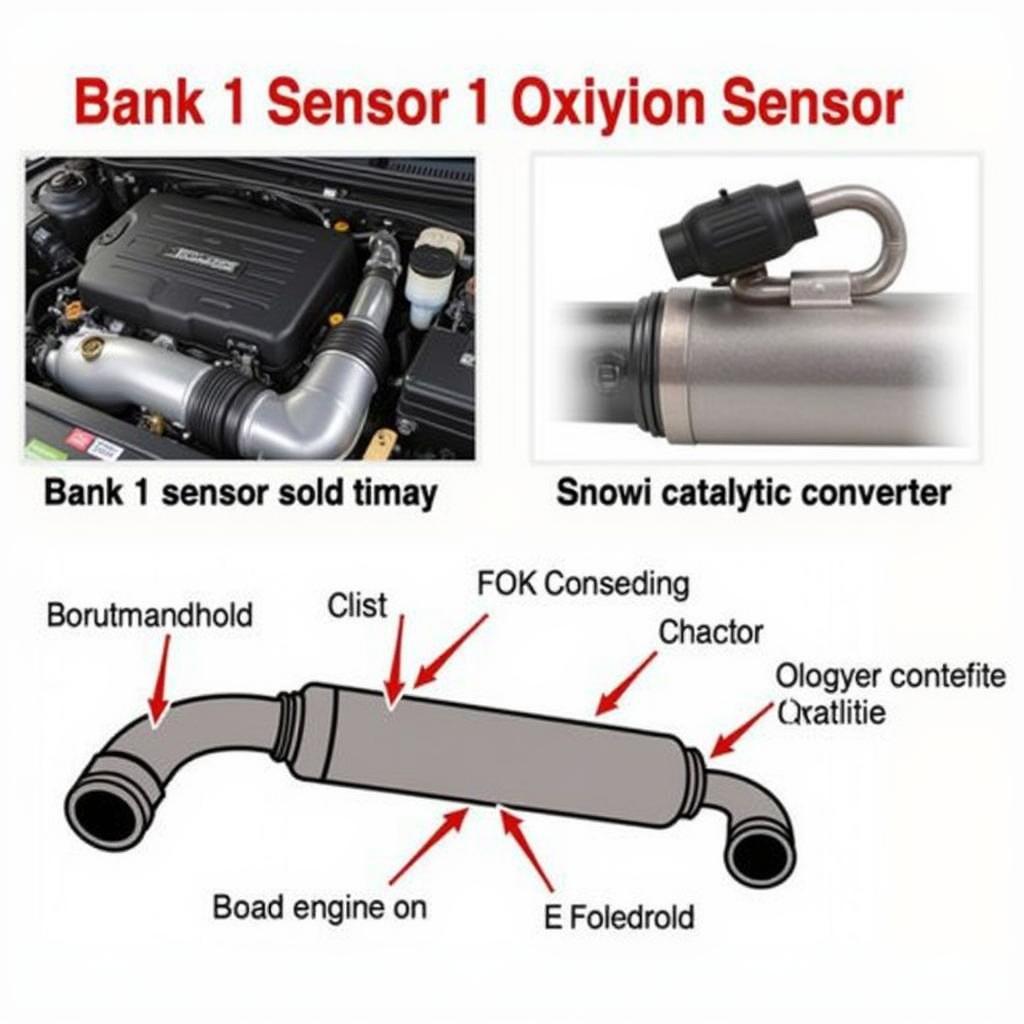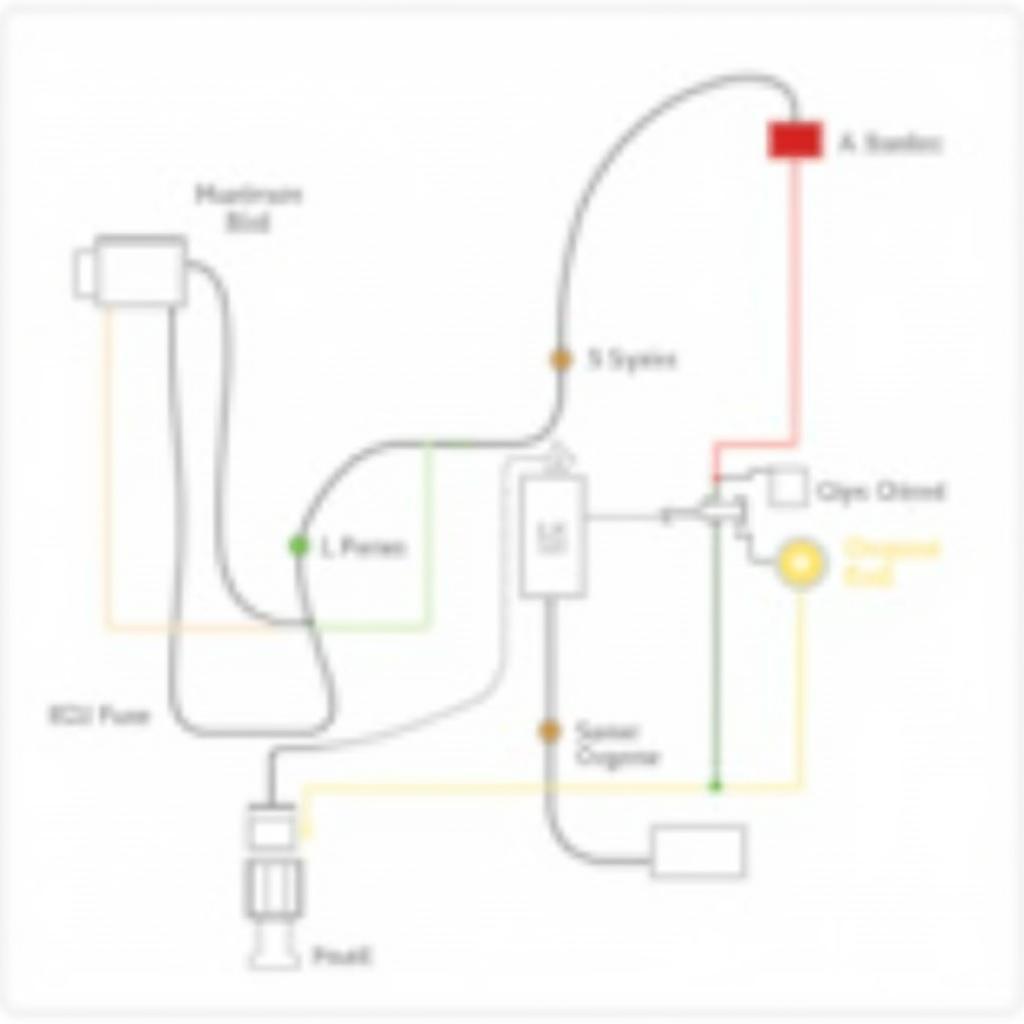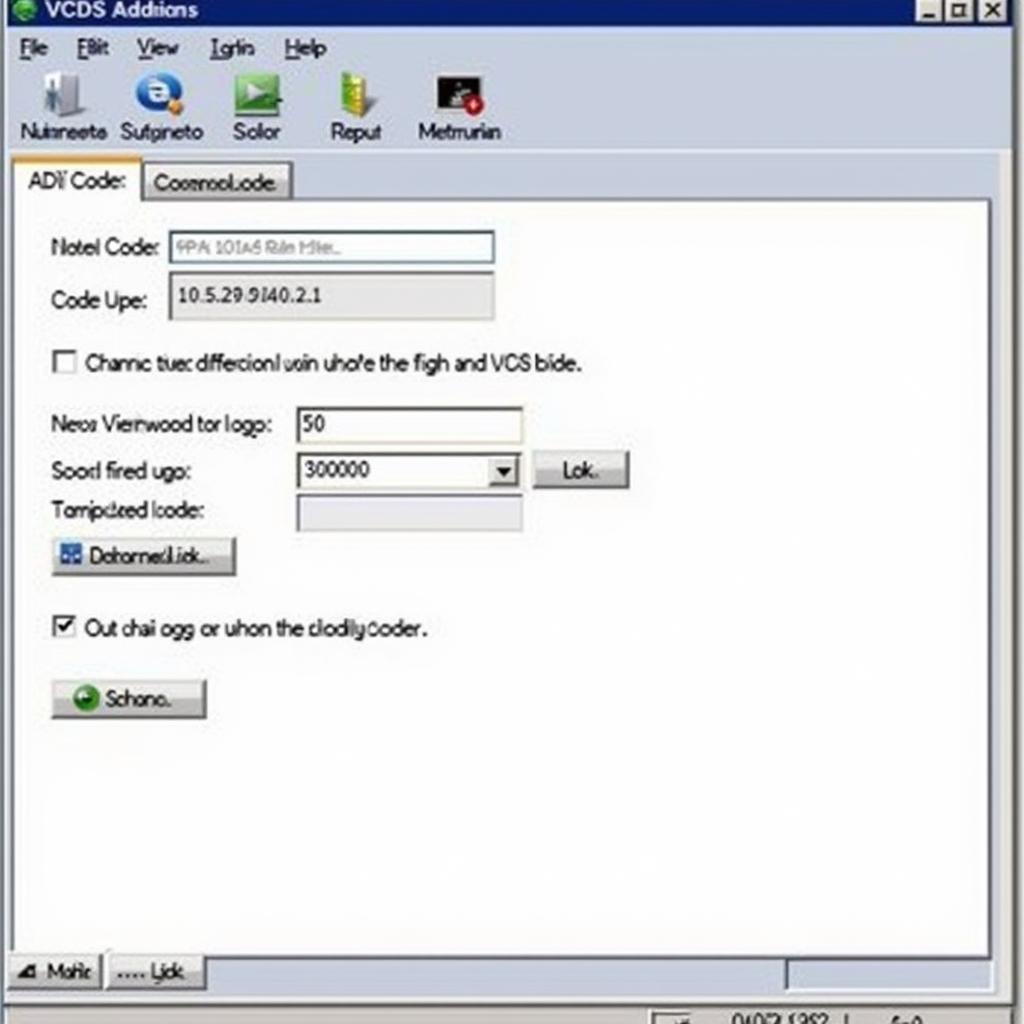The dreaded 01314 error code. If you’re seeing this on your VCDS scan, it’s likely causing you some frustration. This article will delve deep into the 01314 VCDS error code, explaining its causes, symptoms, and most importantly, how to fix it. Whether you’re a seasoned mechanic or a car owner trying to understand what’s happening under the hood, this guide is for you.
Engine performance issues can be incredibly frustrating, and the 01314 code, often indicating a problem with the oxygen (O2) sensor, is no exception. This code specifically points to the O2 Sensor 1, Bank 1, Sensor 1, which is located before the catalytic converter on the exhaust manifold. Its job is crucial: it measures the oxygen content in the exhaust gases and sends this information to the Engine Control Unit (ECU). The ECU then uses this data to adjust the air-fuel mixture, ensuring optimal combustion and fuel efficiency. A malfunctioning sensor can throw this delicate balance off, leading to a range of problems.
Decoding the 01314 VCDS Trouble Code
The 01314 code is defined as “O2 Sensor Circuit No Activity Detected (Bank 1 Sensor 1)”. This essentially means the VCDS system isn’t receiving any signal from this particular oxygen sensor. This lack of activity can stem from a variety of issues, from a simple loose connection to a more serious sensor failure. Understanding the potential causes is the first step towards a successful diagnosis.
 VCDS 01314 Oxygen Sensor Location
VCDS 01314 Oxygen Sensor Location
What Causes the 01314 Error Code?
Several factors can trigger the 01314 error. Here are some of the most common culprits:
- Faulty Oxygen Sensor: The most straightforward cause is a failing O2 sensor. Over time, these sensors can degrade due to exposure to high temperatures and exhaust gases.
- Wiring Problems: Damaged, corroded, or loose wiring in the sensor circuit can disrupt the signal transmission.
- Exhaust Leaks: Leaks in the exhaust system, particularly upstream of the sensor, can introduce fresh air and skew the oxygen readings.
- Blown Fuse: A blown fuse in the circuit supplying power to the sensor can result in no activity.
- ECU Problems: While less common, a malfunctioning ECU can also be the root of the problem.
Symptoms Associated with the 01314 Code
The 01314 code often presents itself through a variety of noticeable symptoms. These can include:
- Check Engine Light: The most obvious sign is the illumination of the check engine light on your dashboard.
- Reduced Fuel Economy: A malfunctioning O2 sensor can cause the engine to run rich (too much fuel), leading to decreased fuel efficiency.
- Rough Idle: The engine may idle roughly or inconsistently.
- Hesitation or Stalling: You might experience hesitation or stalling during acceleration.
- Failed Emissions Test: A faulty O2 sensor can cause your vehicle to fail emissions testing.
 VCDS 01314 Wiring Diagram
VCDS 01314 Wiring Diagram
Diagnosing and Fixing the 01314 VCDS Code
Before jumping to conclusions, it’s crucial to properly diagnose the problem. Here’s a step-by-step approach:
- Scan for Codes: Use your VCDS system to confirm the 01314 code and check for any other related codes.
- Inspect the Wiring: Carefully examine the wiring harness connected to the oxygen sensor for any signs of damage, corrosion, or loose connections.
- Check the Fuse: Locate the fuse associated with the O2 sensor circuit and check if it’s blown.
- Test the Sensor: Use a multimeter to test the sensor’s voltage and resistance to determine if it’s functioning correctly.
- Check for Exhaust Leaks: Inspect the exhaust system for any leaks, paying particular attention to the area upstream of the sensor.
Fixing the issue might involve:
- Replacing the Oxygen Sensor: If the sensor is faulty, replacement is the most common solution.
- Repairing the Wiring: Damaged or corroded wires should be repaired or replaced.
- Fixing Exhaust Leaks: Address any exhaust leaks to ensure accurate oxygen readings.
- Replacing the Fuse: Replace a blown fuse with the correct amperage rating.
- Consulting a Professional: If the problem persists, or if you’re uncomfortable working on the electrical system, consult a qualified automotive technician.
Conclusion
The VCDS 01314 error code, while potentially troublesome, is usually a fixable issue. By understanding its causes, symptoms, and diagnostic procedures, you can take the necessary steps to resolve the problem and restore your vehicle’s performance and fuel efficiency. Remember, a properly functioning oxygen sensor is essential for optimal engine operation and environmental compliance. Don’t let the 01314 code keep you off the road. 01314 vcds
FAQ
- What does the 01314 VCDS code mean? It indicates no activity from the Bank 1 Sensor 1 oxygen sensor.
- Can I drive with the 01314 code? While you might be able to drive, it’s recommended to address the issue promptly to avoid further problems. 01314 vcds
- How much does it cost to replace an oxygen sensor? The cost varies depending on the vehicle and the sensor itself, but it’s typically a relatively affordable repair.
- Can I replace the oxygen sensor myself? Yes, with basic mechanical skills and tools, you can often replace the sensor yourself.
- What other codes might be related to 01314? Other codes related to fuel mixture or exhaust system issues could be present. 01314 vcds
- How often should oxygen sensors be replaced? Generally, they should be replaced every 60,000 to 90,000 miles.
- Will fixing the 01314 code improve my gas mileage? Yes, a functioning oxygen sensor allows for proper fuel mixture, potentially improving fuel economy.
Need Assistance? Contact us via Whatsapp: +1 (641) 206-8880, Email: [email protected] Or visit us at: 276 Reock St, City of Orange, NJ 07050, United States. Our customer support team is available 24/7.


